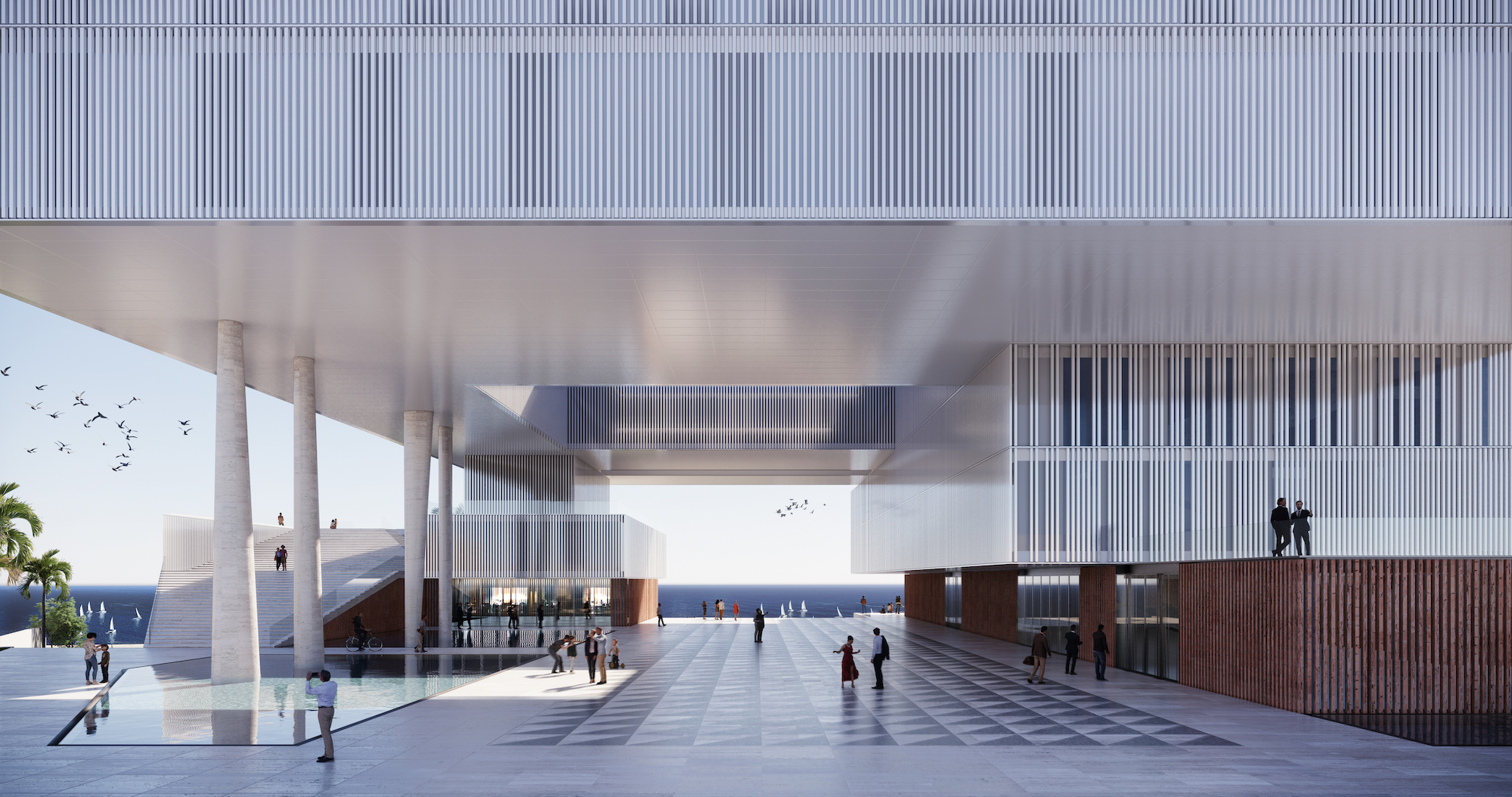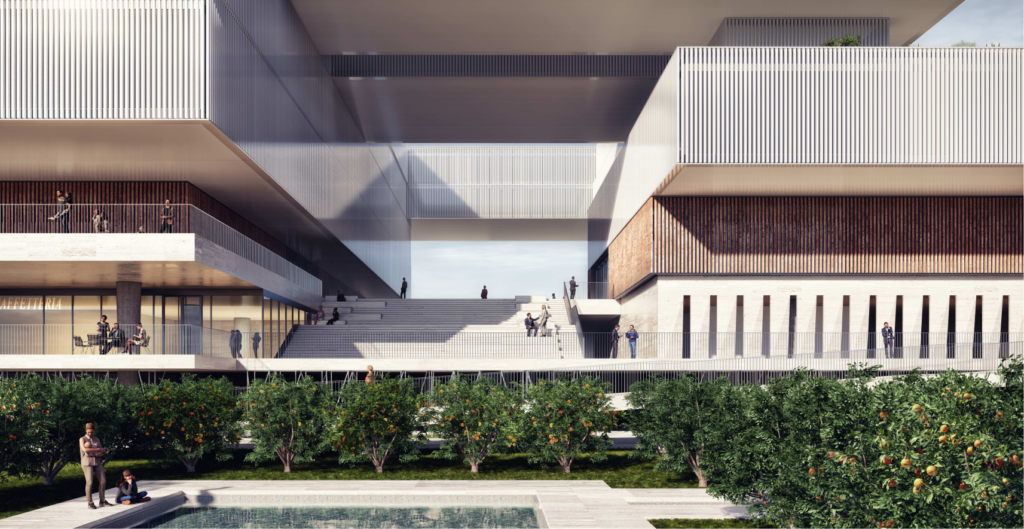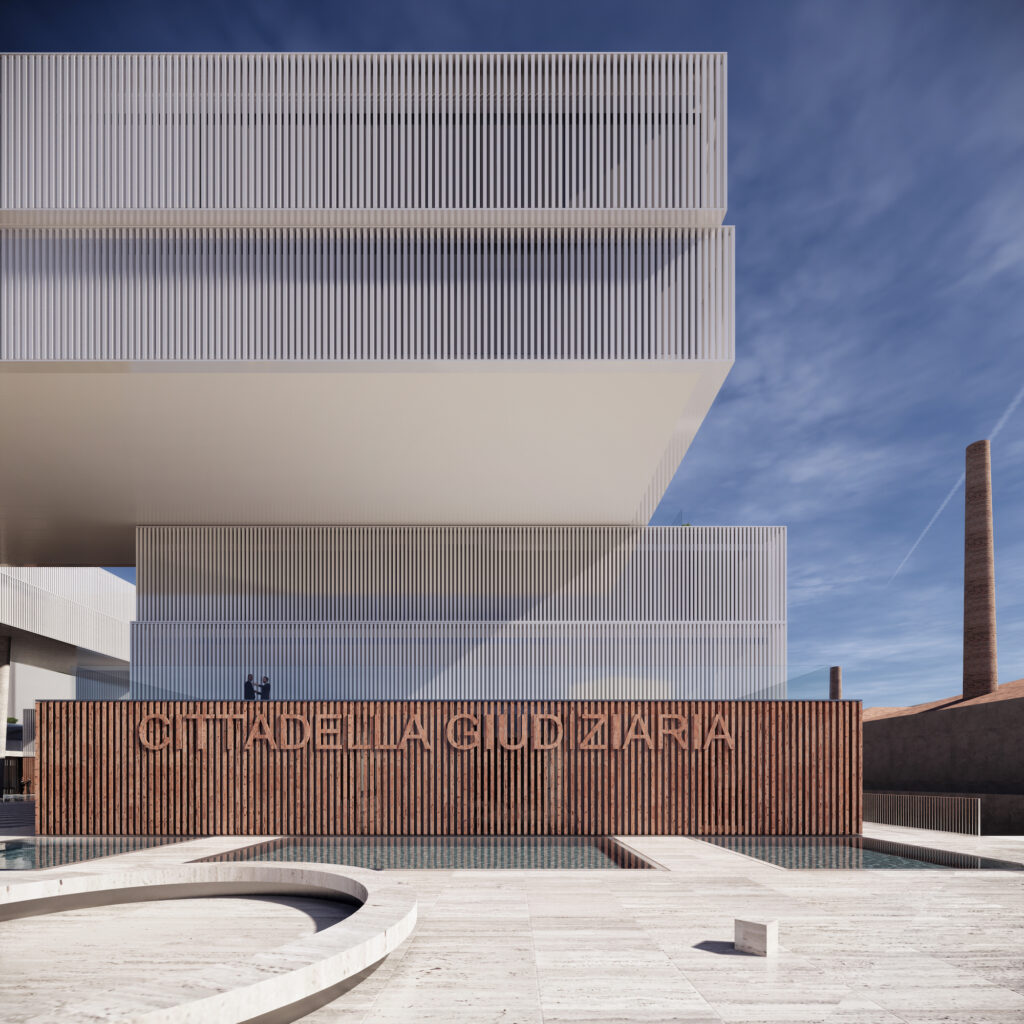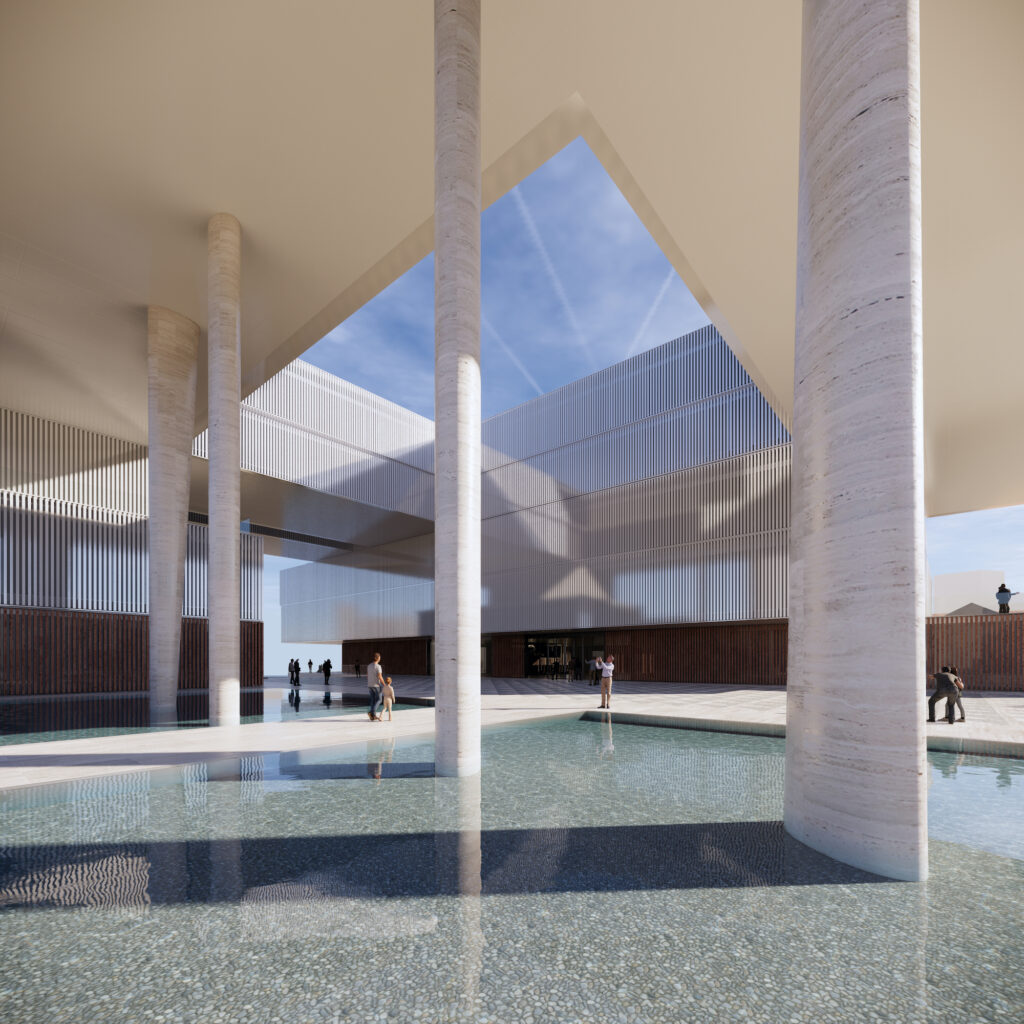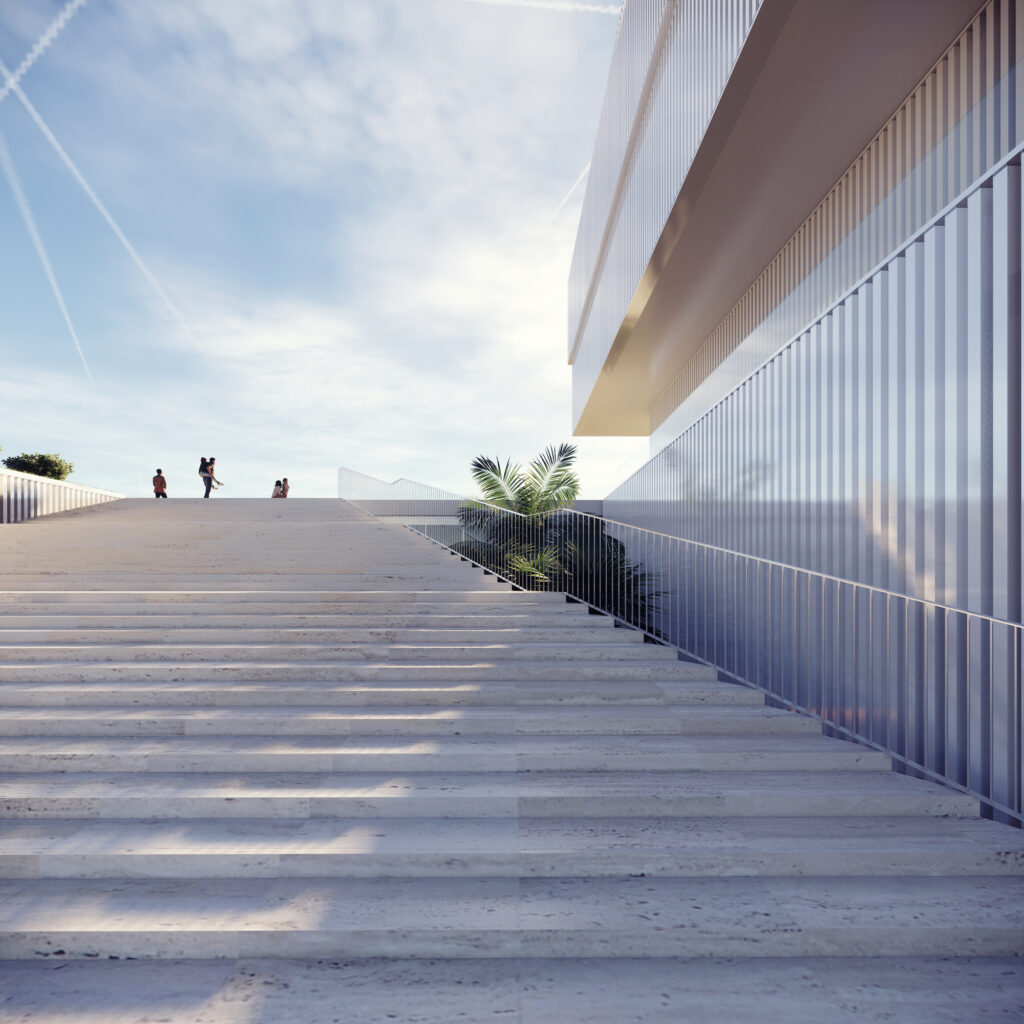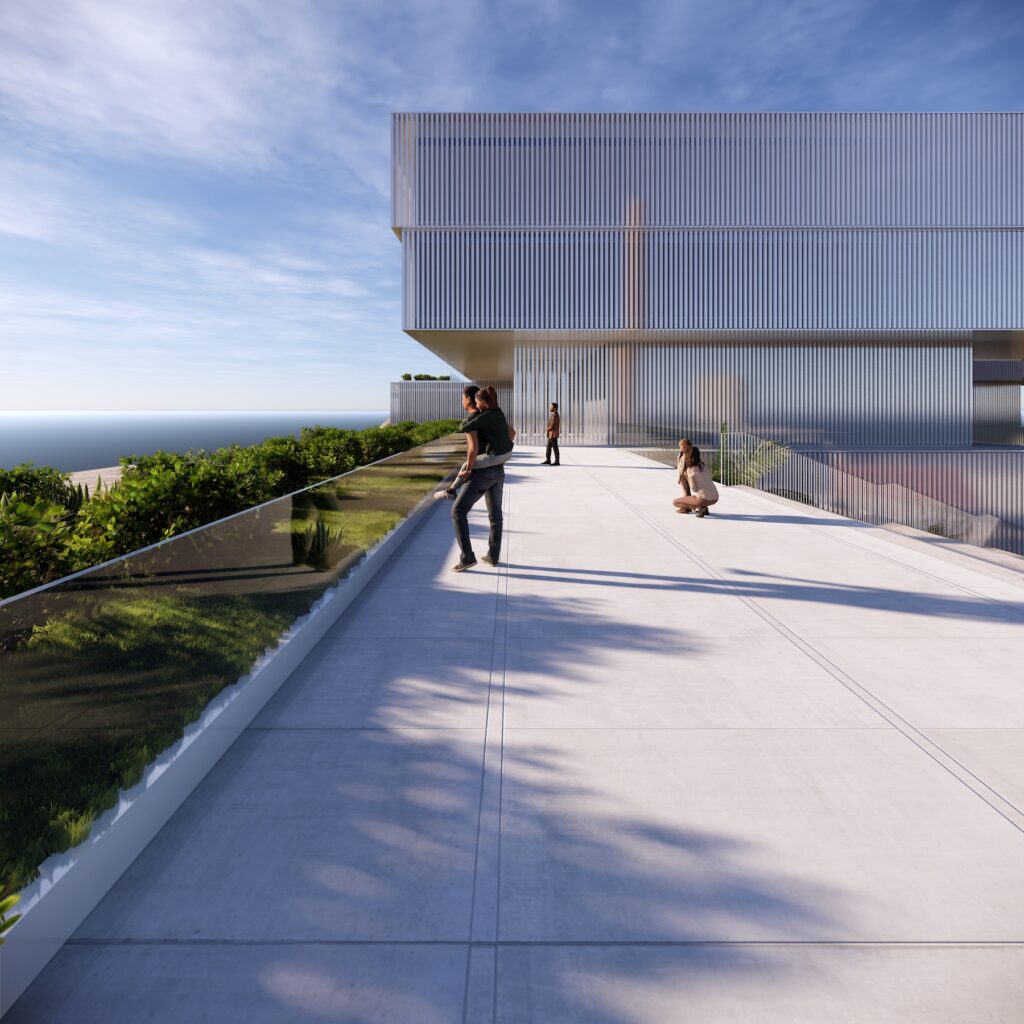Although it has already been reported, we believe the time has come to tell you more about a piece of news that really makes us proud: working together with a group of talented colleagues and friends, we have won the tender for the design of the Catania’s judicial citadel. We would like to thank Modo Studio, Comma Engineering, Claudio Consoli, Melita Pennisi, Salvatore Palillo and Rosario Rosso for their collective hard work.
We are obviously very happy to have been awarded first place in the running for the design of our city, Catania’s judicial citadel.
And we are especially happy because our project proposes that the new judicial offices in Viale Africa in Catania, in addition to focusing on quality and attractiveness, pursue the objective of integration and comparison with the existing surroundings in a completely sustainable way.
Designed in a BIM environment, we have envisaged an environment integrated with the city in the search of shared public spaces and respect for public safety. This relationship between the spaces is underlined by the presence of a large open square on the seafront, which is no longer just a scenic backdrop but will become shape and material in continuous dialogue with the built space.
We were guided by the idea of a close connection between function and form, in which the specific activities (Civil Court, Court of Appeal, Judicial Police, etc.) are declared and distinguished externally as well as internally. The various bodies making up the project – the two overlapping volumes, called Block 1 and Block 2, entirely devoted to the Civil Court and the Court of Appeal, while the third, Block 3, is devoted to the Police Force (Polstato, traffic wardens, Carabinieri, financial police) – have rigorous architectural forms and are welded together by the rediscovered urban space (the square), which becomes the distinctive feature of the entire project.
The quality of contemporary architecture does not fail to speak the language of sustainability, which translates into design choices that involve the use of renewable energy sources, recovery of resources, use of recycled and recyclable materials with a choice based on the criterion of durability, optimisation of lighting and natural ventilation, with significant energy savings and extreme comfort.
A building is sustainable and intelligent only when its spaces are comfortable and of high quality, above all for the individuals who are to occupy it. Not only, therefore, a “physical place” but also a “place of relationships”; a smart building which, by using technological and innovative solutions, can guarantee high performance, both on the micro level of the building and on the macro scale of the neighbourhood in which it is located.
From a structural point of view, a fundamental choice has been made in terms of controlling seismic vulnerability, to give the building a system of passive protection against earthquakes, equipping the structure with devices that remove it from the expected seismic action, rather than seeking costly increases in the geometry and resistance of the materials.
In short, we have deployed our utmost energy in designing a judicial citadel integrated into the urban context of Catania, ecologically sustainable, seismically isolated by friction pendulum type devices, and where the aesthetic value and functional usability are oriented to ensure high levels of sanitation and cleanliness, especially in relation to the needs generated by the Covid-19 pandemic emergency.

